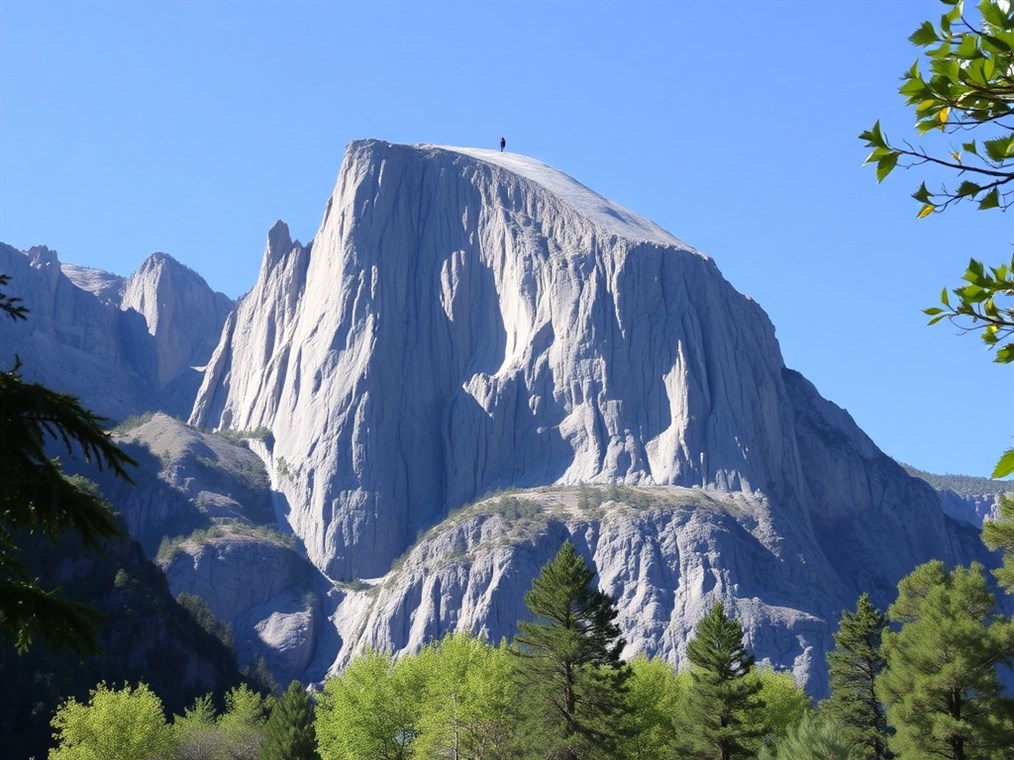
The Making of a Monolith: How El Capitan Came to Be
FactsThe Making of a Monolith: How El Capitan Came to Be
El Capitan. Just the name conjures images of sheer granite, a climber’s ultimate challenge, and the breathtaking beauty of Yosemite. But have you ever stopped to wonder how this iconic monolith came to be? It’s a story millions of years in the making, a true geological epic.
Our tale begins way back, around 220 million years ago, when dinosaurs roamed the Earth. Picture this: the North American tectonic plate, a massive piece of the Earth’s crust, is slowly, inexorably colliding with the Farallon plate under the Pacific. Think of it like a slow-motion car crash, but on a continental scale! This collision, called subduction, forced one plate under the other, creating intense heat and pressure deep below the surface.
This pressure cooker environment led to the formation of magma, molten rock bubbling with minerals. This hot rock started its long journey upwards, but never quite made it to the surface. Instead, it got stuck, cooling slowly, very slowly, deep underground. Over countless millennia, this cooling magma crystallized into a vast body of granite – the Sierra Nevada Batholith. And El Capitan? It’s carved from a specific type of granite within this batholith, aptly named El Capitan Granite. This stuff is tough, thanks to its coarse-grained texture and the interlocking crystals of quartz, feldspar, and mica. The slow cooling was key; it allowed those crystals to grow big and strong, giving El Capitan its legendary durability.
But being strong underground is one thing; getting seen is another. For eons, our granite giant remained hidden, buried under layers of other rock. Then, around 10 million years ago, the tectonic plates got restless again. The Sierra Nevada began to rise, pushing El Capitan closer to the surface. As the mountains lifted, erosion started its work, stripping away those overlying layers and finally revealing the granite beneath.
Now, imagine the Ice Age. Giant glaciers, rivers of ice, grinding their way through the landscape. The most significant of these icy sculptors, during what’s called the Sherwin Glaciation (about 1.3 million to 1 million years ago), played a huge role in shaping Yosemite Valley. These glaciers were like massive sandpaper, carving out the U-shaped valley and further exposing El Capitan. Because El Capitan Granite is relatively solid, with few cracks and joints, it stood up to the glacial onslaught better than the surrounding, weaker rock. This difference in resistance is what ultimately created the towering monolith we see today. It’s like the glacier said, “Okay, I can carve this, but that? That’s staying put!”
And the story doesn’t end there. Even now, El Capitan is constantly changing. Weathering, erosion… they all keep nibbling away at its surface. You can even see evidence of this – the “Texas Flake,” a massive chunk of granite that’s slowly peeling away from the main face, is a prime example.
So, next time you gaze up at El Capitan, remember its incredible journey. From its fiery birth deep within the Earth to the grinding power of glaciers, it’s a testament to the raw, untamed forces that have shaped our planet. It’s more than just a rock; it’s a living, breathing (well, not breathing breathing) history book, telling the epic tale of the Sierra Nevada.
You may also like
Disclaimer
Categories
- Climate & Climate Zones
- Data & Analysis
- Earth Science
- Energy & Resources
- Facts
- General Knowledge & Education
- Geology & Landform
- Hiking & Activities
- Historical Aspects
- Human Impact
- Modeling & Prediction
- Natural Environments
- Outdoor Gear
- Polar & Ice Regions
- Regional Specifics
- Review
- Safety & Hazards
- Software & Programming
- Space & Navigation
- Storage
- Water Bodies
- Weather & Forecasts
- Wildlife & Biology
New Posts
- Diving Deep into Tangerine: More Than Just a Sunny Locale
- Jamaica Backpack Daypack Pockets Shopping – Review
- TEOYETTSF Climbing Backpack Multifunction Military – Buying Guide
- The Curious Case of Cavendish’s Classroom: Where Did This Science Star Study?
- Dragon Backpack Insulated Shoulder Daypack – Buying Guide
- ROCKY Hi-Wire Western Boots: A Rugged Review After a Month on the Ranch
- Vertical Curbs: More Than Just Concrete Barriers
- Regatta Modern Mens Amble Boots – Honest Review
- YMGSCC Microfiber Leather Sandals: Beach to Boardwalk, Did They Hold Up?
- Tangier: More Than Just a Backdrop in “Tangerine”
- DJUETRUI Water Shoes: Dive In or Doggy Paddle? A Hands-On Review
- Barefoot Yellow Pattern Hiking 12women – Is It Worth Buying?
- Koa Trees: How Fast Do These Hawaiian Giants Really Grow?
- DDTKLSNV Bucket Hat: Is This Packable Sun Shield Worth the Hype?